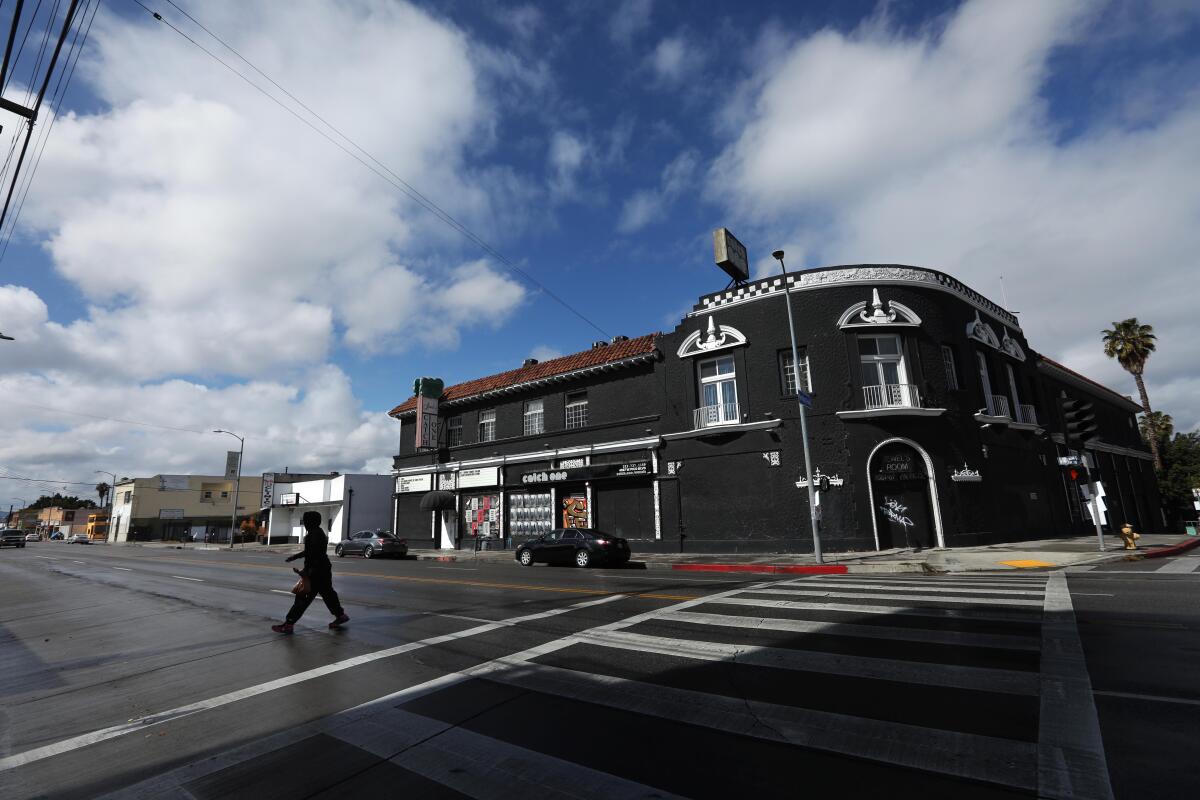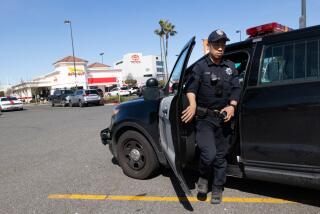Editorial: Trying to cross the street shouldn’t be a crime

California has recognized that there are environmental, public health and mobility benefits to getting people out of cars and into other modes of travel, including biking, walking and taking public transit. Yet in too many instances, state law still favors cars.
Take, for example, jaywalking. In California, it’s illegal to cross the street mid-block or to cross against a traffic signal. Yet almost anyone who travels by foot has violated this law at least once, or even once a day — and not because they’re scofflaws or miscreants.
California’s jaywalking law ignores the reality on the ground, which is that the vast majority of streets were designed to move cars quickly, not to allow convenient, safe walking. Intersections are spaced far apart. Many communities lack the basics of pedestrian-friendly infrastructure, including street lights, safe sidewalks and conveniently placed crosswalks (if any sidewalks or crosswalks.)
It can be far more dangerous to cross the street at an intersection, where drivers routinely turn into the crosswalk without regard to pedestrians or the walk signal. In some cases, it’s safer to cross mid-block during a gap in traffic. Yet the law ignores the simple personal calculations pedestrians are constantly forced to make. What feels safer? What’s convenient? Do I really need to walk a quarter-mile to a crosswalk just to get to the store directly across the street from me? Can I dash across lanes and catch my bus to avoid waiting another 30 minutes for the next one?
Even pedestrian-oriented engineering prioritizes drivers. Crosswalks often have “beg buttons” that require people to push the button to get a walk signal at a traffic light. If someone doesn’t push the button or pushes it a few seconds too late, they won’t get a walk signal and they’ll have to wait through another signal cycle for permission to cross.
So, if walkers sometimes jaywalk to reach their destination, that’s a design flaw rather than a human flaw.
Gov. Gavin Newsom is now considering a bill by Assemblyman Phil Ting (D-San Francisco) that would repeal California’s jaywalking law. If passed, it would still be illegal for pedestrians to create a hazard in the roadway. If someone steps into oncoming traffic or tries to cross the street in a dangerous or reckless manner, he or she could be ticketed. But simply crossing the street in a safe manner outside of a crosswalk or against the traffic light would no longer be illegal.
Law enforcement groups have opposed the bill, arguing that repealing the jaywalking law will create confusion for drivers and pedestrians about safe roadway use, and it could lead to more pedestrian deaths. It’s true that pedestrian fatalities have been on the rise for the last decade. But handing out pricey jaywalking tickets does not make the streets safer, nor does criminalization address the reasons why people jaywalk in the first place.
Newsom should sign Assembly Bill 1238 because it’s an important recalibration of the law to better match the state’s goals for more walkable, livable communities. It will also address the gross inequity in how the state’s jaywalking laws are enforced.
Black people make up 9% of the population in Los Angeles, but they were 31% of the people stopped by the Los Angeles Police Department for jaywalking between 2018 to 2020. The numbers are similar in Long Beach and San Diego, and reports in Sacramento and elsewhere have also uncovered disparities in jaywalking enforcement. Police generally have a heavier presence in Black communities, and advocates say officers use jaywalking as a pretext to stop people. Those stops can turn deadly.
The overpolicing of low-level traffic infractions compounds another disparity — Black, Latino, immigrant and formerly red-lined communities are often separated by freeways and major arterial roads and residential areas are mixed with industrial and commercial zones that have long stretches of streets without intersections, much less crosswalks. Many of these neighborhoods were not designed for easy pedestrian travel, even though residents may be more likely to walk, bike or take public transit.
Simply living and working in communities that prioritize cars over people means pedestrians are more likely to jaywalk and more likely to face the nearly $200 fine for a jaywalking ticket. It’s time to stop punishing people for trying to walk and start building safer streets.
More to Read
A cure for the common opinion
Get thought-provoking perspectives with our weekly newsletter.
You may occasionally receive promotional content from the Los Angeles Times.










